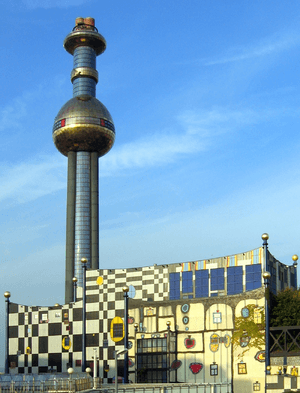Incineration facts for kids

Incineration is a way to get rid of waste. It involves burning waste materials that contain organic matter (things that were once alive). This process is also called "thermal treatment" because it uses high temperatures.
When waste is burned, it turns into ash, flue gas (smoke), and heat. The ash is mostly made of the parts of the waste that don't burn. It can be solid chunks or tiny bits carried by the smoke. The smoke needs to be cleaned to remove harmful gases and particles before it goes into the air. Sometimes, the heat from burning waste can be used to make electric power.
Why is Incineration Useful?
Incinerators can reduce the solid amount of waste by 80–85%. They also shrink the volume of waste by 95–96%. This depends on what the waste is made of and if materials like metals are taken out of the ash for recycling. This means that while incineration doesn't completely replace landfills, it greatly reduces how much space is needed to dispose of waste. Garbage trucks often squeeze the waste before taking it to the incinerator.
Burning waste is very popular in countries like Japan, where land is scarce. Denmark and Sweden have used the energy from incineration for over 100 years. They use it in local power plants that create both heat and electricity for district heating systems. In 2005, burning waste provided 4.8% of Denmark's electricity and 13.7% of its total home heating. Other European countries, such as Luxembourg, the Netherlands, Germany, and France, also rely a lot on incineration for their city waste.
Incineration is also very important for treating dangerous waste and medical waste. It's often necessary to burn medical waste at high temperatures. This destroys pathogens (germs) and harmful substances it might contain.
A Brief History of Incineration
The first incinerators for waste disposal were built in Nottingham, England, in 1874. They were made by a company called Manlove, Alliott & Co. Ltd. These early incinerators were first called destructors. The first incinerator in the United States was built in 1885. It was located on Governors Island in New York, NY.
Images for kids
-
Electrodes inside electrostatic precipitator
-
Operation of an incinerator aboard an aircraft carrier
See also
 In Spanish: Incineración para niños
In Spanish: Incineración para niños












